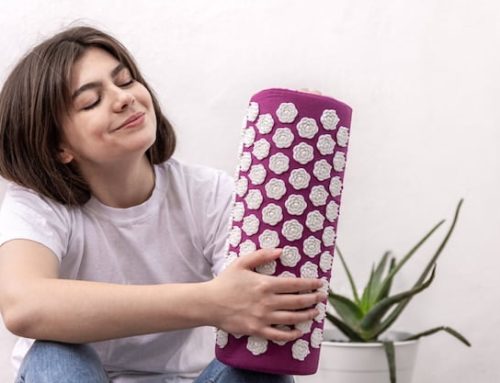Introduction
Foam rolling has become increasingly popular over the years as a way to manage muscle soreness, improve flexibility and mobility, and prevent injuries. This self-massage technique involves using a foam roller to roll out knots and tight areas in your muscles, helping to release tension and promote relaxation. One question that often arises is whether or not foam rolling can actually squeeze out muscle knots. In this article, we’ll take a closer look at the science behind muscle knots and how foam rolling may or may not be able to help.
What are muscle knots?
Muscle knots, also known as myofascial trigger points, are tender spots in your muscles that can be painful when touched. These knots occur when muscle fibers become tight and contracted and fail to release, creating a hard, knotted feeling. They can be caused by a variety of factors, including poor posture, overuse, injury, and stress.
Can you “squeeze” out a muscle knot?
The short answer is no, you can’t really “squeeze” out a muscle knot. While foam rolling can certainly help to reduce tension and tightness in your muscles, it doesn’t actually manipulate the muscle fibers themselves. Instead, foam rolling works by applying pressure to the soft tissues surrounding the muscle, such as the fascia, to help release tension and promote blood flow.
How does foam rolling work?
Foam rolling works by applying pressure to specific areas of your body using a cylindrical foam roller. This pressure helps to break up adhesions in the soft tissue and increase blood flow to the area. As blood flow increases, oxygen and nutrients are delivered to the muscle tissue, promoting healing and repair.
Does foam rolling actually help with muscle knots?
While foam rolling may not be able to “squeeze” out muscle knots, it can certainly help to reduce tension and alleviate discomfort associated with trigger points. By applying pressure to specific areas of the body, foam rolling can help to release tight muscles and improve range of motion. In addition, foam rolling has been shown to increase blood flow and promote relaxation, which can be beneficial for overall muscle health.
How often should you foam roll?
The frequency with which you should foam roll depends largely on your individual needs and goals. Some people may benefit from daily foam rolling, while others may only need to foam roll once or twice per week. It is important to listen to your body and pay attention to any discomfort or pain during foam rolling.
Are there any risks associated with foam rolling?
While foam rolling is generally considered safe, there are some risks associated with this practice. Overuse or improper technique can lead to injury, particularly in individuals who are new to foam rolling. It is important to start slowly and gradually increase intensity and pressure over time. In addition, foam rolling should not be used as a substitute for proper medical care, particularly in cases of significant injury or medical conditions.
Conclusion
While foam rolling may not be able to “squeeze” out muscle knots, it can certainly help to reduce tension and alleviate discomfort associated with trigger points. By applying pressure to specific areas of the body, foam rolling can help to release tight muscles and improve range of motion. If you are interested in incorporating foam rolling into your fitness routine, be sure to start slowly and gradually increase intensity over time. With proper technique and care, foam rolling can be an effective tool for managing muscle soreness and promoting overall muscle health.






